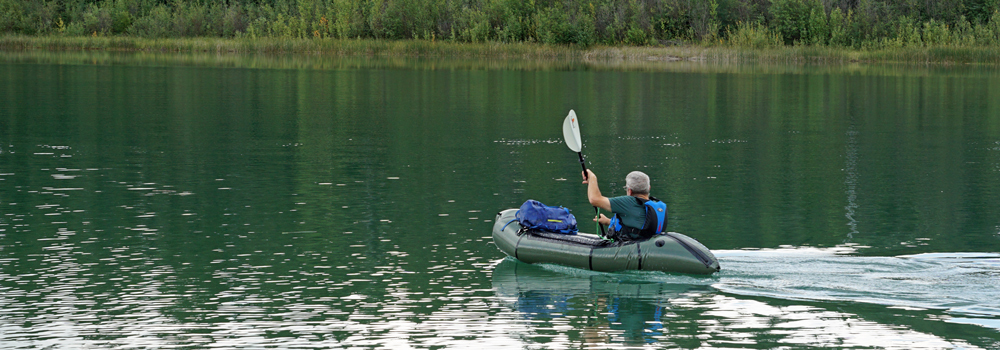
Water safety
Wood Buffalo National Park
Each year visitors enjoy the lakes and rivers of Wood Buffalo National Park. From canoeing and stand-up-paddle boarding to fishing, there is a huge variety of ways to spend a day at the lake. Make the most of every water adventure by carrying essential safety equipment as required by Transport Canada, including an approved personal flotation device.
- Paddling
- Power boating
- Swimming safety
Safety is a shared responsibility. Take the following steps to ensure each adventure on the water is a safe one:
1. Complete a pre-departure checklist and take a boating safety course to learn how to avoid potential dangers and operate pleasure crafts safely.
2. File a trip plan with a trusted adult and become familiar with equipment to help prevent a minor issue from becoming a life-threatening situation.
3. Carry a reliable communication device such as a radio, SPOT device or an InReach.
4. Ensure the vessel complies with Transportation Canada’s Small Vessel Regulations. Failure to comply with Transport Canada Small Vessel Regulations could result in penalties or being required to remove your vessel from the water until requirements are met.
5. Ensure the vessel is registered with the registration numbers properly displayed and only properly licensed persons operate the vessel. Operate the vessel in a safe, lawful manner.
6. Stay close to shore and use pleasure crafts at own risk. All waterways in Wood Buffalo are not regularly patrolled.
7. Prepare for potentially strong winds and waves on lakes as weather can change quickly. Check forecasted weather conditions before departure.
8. Be self-reliant and prepare to self-rescue should any boat, canoe or kayak capsizes, as help may not be immediately available.
For more information visit the Transport Canada pleasure craft information webpage.
Cellphone coverage is not available in most areas of the park and in the few areas that it is, coverage is not reliable. It is important that you and your companions are prepared for any emergency or delay that may arise.
PaddlingA day kayak trip on Pine Lake or an overnight canoe adventure on the Peace River can be a vacation highlight. Plan ahead to make the most of each paddling adventure. Carrying the essential safety items, staying within your own abilities, filing a trip plan and being familiar with equipment will help prevent minor issues from becoming a life threatening situation.
Remember, always wear an approved personal flotation device and use caution while on the water. Even during the summer months, many lakes and rivers have water temperatures that can lead to hypothermia in a short time. Plan routes close to shore to minimize time in the water should a capsize occur. Be alert to changes in wind and weather conditions. Information on paddling safety can be obtained at the Visitor Center or visit AdventureSmart.
Power boatingPower boats are allowed on Pine Lake (except for the southern basin) and along the Slave, Athabasca and Peace Rivers in Wood Buffalo National Park. It is important to be prepared for the unexpected and remember that this is a truly wild wilderness area. Knowing how equipment works, watching out for paddlers and wildlife, and having the proper safety equipment are all ways of ensuring everyone enjoys their time on the lake.
Always wear an approved personal flotation device and use caution while on the water. Ensure that the vessel has the required safety equipment on board and be familiar with its operation. Operate motorized vessels in a manner that complies with Transport Canada’s pleasure craft legislation. As in other motor vehicles, it is unlawful to consume alcoholic beverages in a motor vessel or operate a motor vessel while impaired.
Cellphone coverage is not available in most areas of the park and in the few areas that it is, coverage is not reliable. It is important that you and your companions are prepared for any emergency or delay that may arise.
Carrying the essential safety items and filing a trip plan can also ensure safety on the water. To learn more about water safety talk to a Parks Canada employee or visit AdventureSmart.
Swimming safetyWater temperatures suitable for swimming are usually reached by end of June and continue until early September. Remember, beaches are unsupervised and swimming in the park is at your own risk. Swimming skills and approved personal floatation devices are not always enough to save a life. Often drowning incidents involve other factors beyond swimming ability. Water safety awareness - such as how to prepare for an emergency, and what to do if one occurs - helps prevent an emergency in or on the water.
Children and weak swimmers need constant supervision in and around water. Even someone who knows how to swim are at risk for drowning. All children and weak swimmers need to be supervised in the water. When swimming, be aware of the following:
- Keep children and weak swimmers within arm’s reach of an adult
- Lakes or ponds might be shallow near the bank, and can suddenly increase in depth
- Wear foot protection such as aqua socks or water shoes as hazards may be present in the water
- Watch out for weeds and grass that can entangle a leg or arm
- Unlike the calm waters of a swimming pool, the beach may have hazards such as strong wind, waves and sharp rocks
- Keep off and out of the water when there is lightning
- For more information on child safety in and around water, visit the Canadian Red Cross
- Date modified :